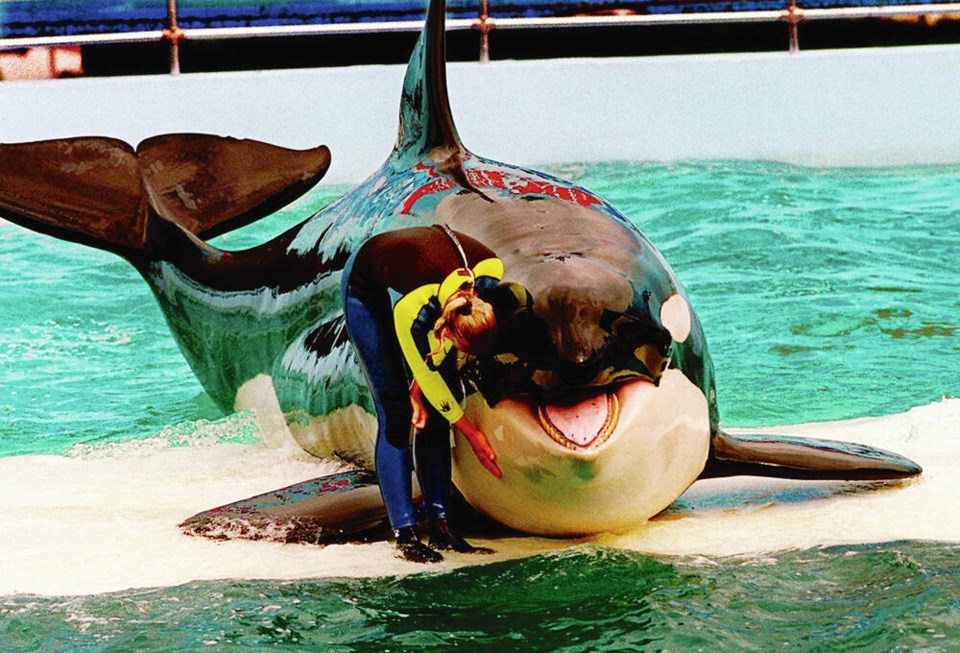A commentary by the author of The Killer Whale Who Changed the World and Orcas Everywhere.
Lolita, the southern resident orca who has spent more than half-a-century at the Miami Seaquarium, is being returned home to the Salish Sea. Maybe.
Like Fox Mulder, I want to believe. That’s why I didn’t really want to read the not-so-fine print in the press release that gives a timeline of up to two years — which is a long wait for a 57-year-old orca.
Lolita’s name comes from a character in a novel about a middle-age man lusting after a 12-year-old girl, because the four-year-old orca had been bought to breed with the Seaquarium’s current resident, Hugo.
That’s why people who started fighting to free her preferred the name she received after being caught in a net at Penn Cove in Washington in 1970 — Tokitae — a Coast Salish greeting that means “nice days, pretty colours.”
Today, they tend to shorten the name to Toki.
The Lummi Nation has been fighting for Toki’s release for years, and consider her a member of their family. They formally named her Sk’aliCh’elh-tenaut in 2019. If this orca with many names is returned to the Salish Sea, the Lummi will be involved with caring for her.
Comparisons to the release of Keiko (the Free Willy whale) in 2002 are frequent — and completely disingenuous. I’m only saying “disingenuous” because the editor likely won’t print the word: Bull$%&. See?
Orcas spend their lives with their pods — their communities.
We know Toki is one of the endangered southern residents who call the Salish Sea home. We know she’s from L-Pod. We know each pod has their own distinct language. We know from Toki’s reactions to recordings of calls from her pod that she still seems to recognize that language. Some researchers suspect we even know her mother is Ocean Sun — the matriarch of the southern residents.
Keiko was never reunited with his family because no one had a clue who his family was. There are a lot of orcas in Iceland — also a lot of ocean. Keiko wasn’t “returned home,” he was deposited in the general vicinity of where he was kidnapped from.
So, to the surprise of no one who knew anything about wild whales, Keiko never found his pod and preferred to hang out with humans since — unlike orcas from other pods — humans were more likely to feed him than fight him.
Keiko survived in the wild for five years. Declaring that living free for five years was a “failure” — which was how it was and continues to be reported — is straight-up disingenuous. I’d love to know the metric used to decree that swimming free instead of doing tricks for treats was a failure in terms of quality of life or how anyone knows Keiko could have survived five more years in captivity.
The plan for Toki isn’t to drop her in the Salish Sea and hope for the best. It’s to place her in a sea pen, in her home waters, with around-the-clock care. She won’t be swimming free with her family, but they’ll be able to visit. Based on everything we know about these whales, once they hear her calls, they will visit.
Some of Toki’s trainers are issuing dire warnings that if she’s sent home she will die here. Of course she will. And if she stays in Miami she will die there. And she will die there in some of the worst conditions any captive orca has ever been held in.
One place where a comparison to Keiko is absolutely fair is that Toki’s home is horrendous. In 2017, the U.S. Department of Agriculture confirmed that the fishbowl Toki lives in is undersized, even measured against the embarrassingly low standards set for displaying captive orcas in America.
So this begs the question: Two years? It’s hard to believe there are that many logistical hoops left for the humans holding her to jump through, but if she’s going to be stuck in captivity, she should be as comfortable as possible for as long as she’s there.
That means spending money on improving her tank now — which might just speed up that timeline.
Some people have suggested Toki could die on the flight home. Sure she could. But humans have flown a lot of orcas around the world over the years without incident, though almost all were en route from their homes to marine parks.
Some have suggested that returning Toki into the wild is cruel because she’s spent most of her life in captivity and that somehow it’s kinder to leave her to die in the smallest orca tank in America. I’m curious whether these people would apply the same logic to a human who has spent the majority of their life in prison?
Although Toki has had dolphin companions, she hasn’t seen another orca since Hugo killed himself in 1980 by repeatedly bashing his head into the side of his pool.
Solitary was outlawed in Canadian federal prisons because it’s considered “torture.”
Orcas are more social than we are. It’s time for Toki to return home so that she can spend her remaining days, however many there are, with her family.
>>> To comment on this article, write a letter to the editor: [email protected]

